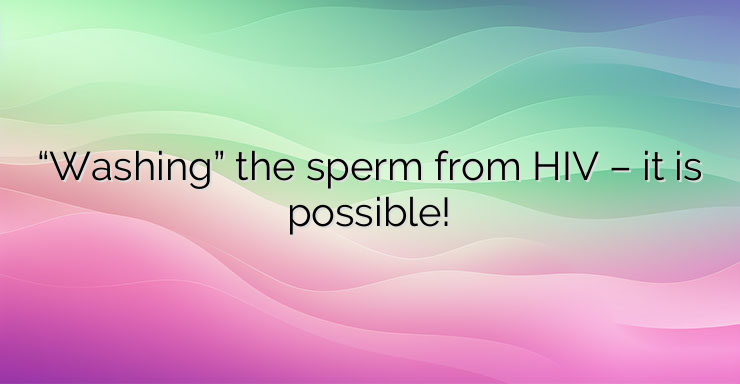A method called “sperm washing” can prevent transmission of the HIV virus from the man to the mother or child, according to a new study published in the journal Fertility and Sterility. About 1,800 couples in which only the man is HIV-positive took part in the study , conducted at the Evandro Chagas Clinical Research Institute in Rio de Janeiro, Brazil. In the last 2 decades, scientists have been trying to perfect a method to “wash” the sperm of men carrying the HIV virus, the cause of AIDS. During sexual contact, this virus can be transmitted to the partner and, accordingly, to the future child. The goal of the method is to “wash” and “clean” the sperm from the virus so that the child can be born healthy and not become a carrier of the insidious disease, the researchers say. The procedure is very suitable for couples who very much want to have a child, but are worried about the transmission of the virus to the newborn, stated Dr. Deborah Anderson from Boston University. The procedure that gives the highest reliability for achieving pregnancy and avoiding risk of HIV transmission is ICSI. ICSI is a method in which a sperm is injected directly into the woman’s pre-retrieved egg, after which the fertilized gamete is transferred back into her uterus. This type of infertility treatment is considered safer in couples where the man is HIV-positive. Scientists claim that the sperm used does not carry the HIV virus. If insemination is done in the uterus, even with “washed” sperm, the probability of transmission of the virus is much greater, experts say. After the ICSI procedure, about 80-85% of women become pregnant. After testing for the presence of HIV in the mother and the child, the tests are negative. Unfortunately, the procedure is very expensive and few couples can afford it. They resort to natural fertilization, which exposes both mother and child to great risk, experts say.


Leave a Reply